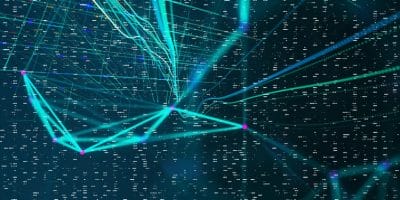The Power of AI Through Tool Integration
The advanced language models behind AI assistants like GPT-4 are incredibly impressive at understanding and generating human-like text. However, their true potential is unleashed when seamlessly integrated with external tools, data sources, and capabilities—a paradigm called “tool use” in AI.
What Are Tools for AI Systems?
Tools refer to any external function, API, database, sensor, algorithm or instrument that an AI agent can invoke or query on demand.
Common examples in biotechnology include:
- Computational chemistry/biology software and modeling engines
- Genomic, proteomic, metabolomic and other biological databases
- Automated laboratory equipment and robotic systems
- Microscopy, high-throughput screening and other biomedical imaging analysis
- Literature search engines and clinical trial repositories
- Electronic health record (EHR) data and real-world evidence pools
By flexibly integrating such a diverse toolset, an AI is no longer limited to just its initial training data and models. It can dynamically access required information, simulations, physical instruments and real-world datasets as situations demand.
Configuring AI Agents to Leverage Tools
To enable tool use, AI systems are designed from the outset with APIs and interfaces to call relevant external tools through natural language instructions. The large language models are then trained on when and precisely how to leverage different tools appropriately.
For example, when working on a new drug discovery pipeline, the AI could:
- Search literature and patents for related compounds and biological targets
- Run computational modeling and simulations on the molecules’ properties
- Query reaction databases to design an optimal synthesis pathway
- Generate instructions for a lab robot to execute the synthesis
- Set up automated biological assays by integrating with liquid handling systems
- Analyze the assay data and suggest modifications to the molecular design
The key is providing the AI with a robust “tools” context that describes what capabilities are available and their proper use cases. With substantial training across tool integration scenarios, the AI learns to strategically combine the right tools in a cohesive workflow to complete even highly complex objectives.
Amplifying Biotechnology Capabilities with AI
Tool integration represents a profound paradigm shift – AI is no longer just rigid software scripts but rather a flexible orchestrator that can dynamically combine models, databases, simulations and physical lab instruments on demand. This is why we have developed our scientific application hub, scientific data hub and data preservation solutions to enable secure data handling and availability.
As tools across the bio/pharma R&D stack become more open, interoperable and accessible through cloud platforms, we’ll see AI assistants that can combine computational and experimental capabilities in incredibly powerful ways. The possibilities are vast:
- Fully autonomous drug discovery pipelines from target identification to lead optimization
- Designing novel proteins, enzymes, biomaterials and delivery vehicles
- Controlling mobile robot scientists to run automated experiments
- Optimizing bioprocessing, fermentation, biologics production and more
- Ingesting real-world data to power precision medicine and clinical trial optimization
With the proper toolset integration and training, AI can exponentially amplify human expertise and drive breakthroughs across all areas of biotechnology research, development and manufacturing.
Addressing the Challenges
As AI systems become more powerful by integrating external tools and capabilities, it is crucial that we carefully navigate the potential risks and challenges:
Security and Trust
Robust safeguards must be in place to ensure AI assistants only invoke approved tools and cannot be exploited to access unauthorized systems or data. There must be transparency around what tools an AI is using and what capabilities they enable.
Reliability and Reproducibility
The outputs from integrated tools need to be validated and vetted, with clear processes for navigating errors, edge cases or conflicting results from different tools. AI-driven workflows must be meticulously documented for full reproducibility.
Responsible Use Guidelines
While tool integration amplifies AI’s potential, it also increases the need for well-defined ethical guidelines governing its use. This includes transparency, human oversight, and clear policies around applying AI assistants to sensitive areas like patient data or bioweapons research.
Talent and Training
Skilled professionals will be required to configure, train, validate and responsibly deploy these tool-integrated AI systems. A cyberbio workforce converging biotechnology and AI/data expertise will be critical.
The path ahead is challenging but imperative. By thoughtfully addressing these concerns while unleashing the power of tool use, we can create AI assistants that blend the best of human intelligence and computational scale. These systems will be force multipliers that empower our scientists and revolutionize how we conduct research, develop therapies and manufacture bio-based products. Realizing this future will require close collaboration across industry, academia and government. But the potential is powerful – smarter, more capable AI can be the polymath assistant that propels biotechnology innovation to address humanity’s greatest challenges.
 >
> 

